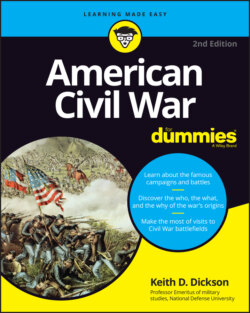Читать книгу American Civil War For Dummies - Keith D. Dickson - Страница 112
Hauling food and ammo: The quartermaster
ОглавлениеThe quartermaster (or in modern terms, the logistician) has the unromantic but all-important job of providing everything the army needs to fight. The quartermaster supervised the rail depots and the supply trains (the long line of wagons) that followed the army on the march. In the Union army, the standard was 25 wagons for every 1,000 men. The medical corps treated casualties (the sick, dead, and wounded), taking them from the battlefield, burying the dead, and evacuating the wounded or sick to the rear for treatment and (the all-too-rare) recovery.
Orders for the movement of armies and combat information were passed through the signal troops, who maintained the critical lines of communications for the army. In the Civil War these troops used signal flags, mirrors, torches, balloons, couriers (messengers), and the telegraph to pass orders and instructions. Throughout the war, both sides established a highly organized communications system that went from the national leaders to the armies in the field and down to the company level — and back up again. For the first time in the history of war, the telegraph became an indispensable means of almost instantaneous communications. It allowed presidents Davis and Lincoln an unprecedented opportunity to maintain contact with generals in the field. The telegraph also allowed them at times to meddle in their generals’ affairs. The armchair strategists in Richmond and Washington also enjoyed using the telegraph to provide field generals with commentary and criticism. Civil War leaders were the first to discover what people today know all too well: Communications technology can be both a blessing and a curse.
